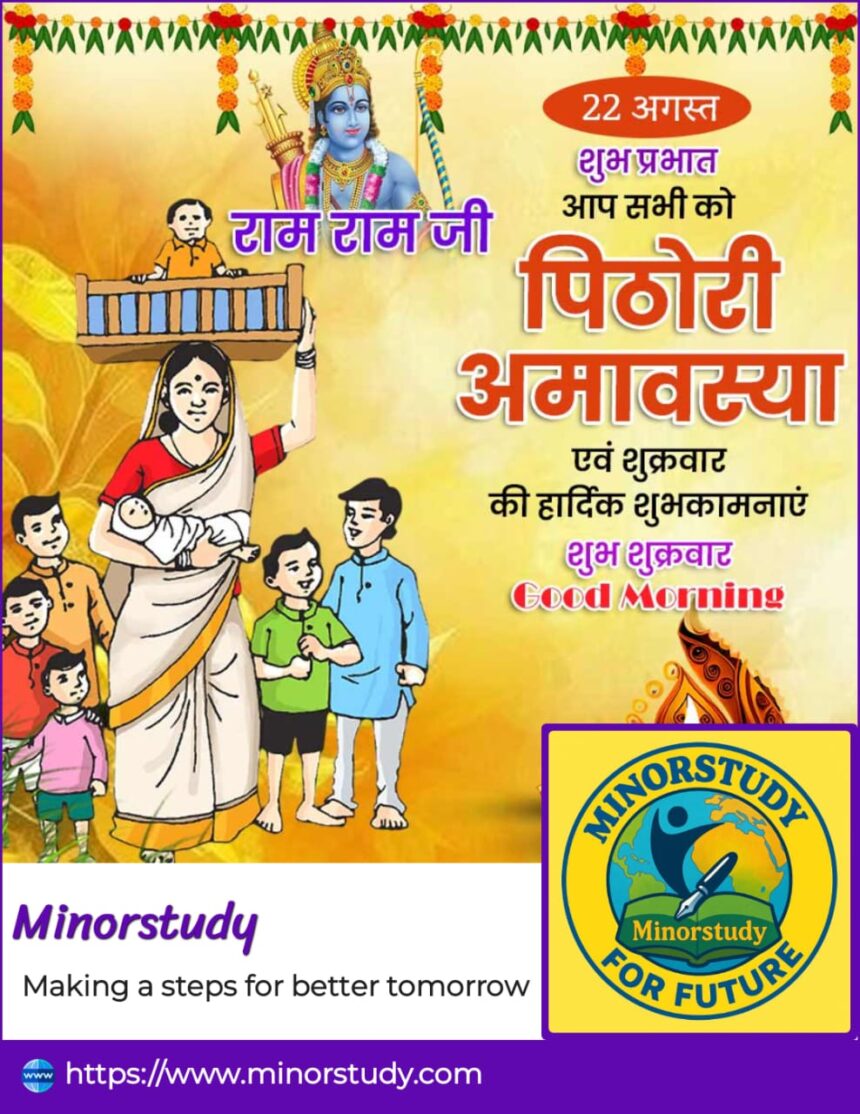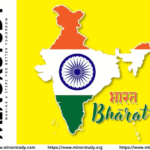Introduction
In the grand calendar of Hindu festivals and observances, Amavasya (New Moon Day) holds a deep spiritual and cultural significance. Among the many Amavasyas observed throughout the year, Pithoree Amavasya stands out as a sacred day dedicated to honoring ancestors (Pitru), seeking blessings, and practicing rituals for family prosperity. It is a day that blends spirituality, tradition, and human connection with ancestral roots.
- Introduction
- History of Pithoree Amavasya
- Timeline of Observance
- Key Facts about Pithoree Amavasya
- Significance of Pithoree Amavasya
- Observance and Rituals
- Human-Friendly Perspective: Why It Still Matters
- Wishing on Pithoree Amavasya
- Importance in Daily Life and Society
- FAQs on Pithoree Amavasya
- Review Section: What People Say About Pithoree Amavasya
- Conclusion
Celebrated mostly in North and Central India, particularly in states like Madhya Pradesh, Uttar Pradesh, Bihar, and Chhattisgarh, Pithoree Amavasya carries great importance for women, families, and society as a whole.
This article explores the history, facts, significance, rituals, observance, wishes, FAQs, and life impact of Pithoree Amavasya in a simple, human-friendly tone.
History of Pithoree Amavasya
The word “Pithoree” is derived from Pitru (ancestors). It refers to offerings and rituals performed in honor of forefathers to express gratitude and seek their blessings. Ancient texts like the Puranas and Dharma Shastras describe the importance of Amavasya as the most suitable day to offer food (Pind Daan), water (Tarpan), and prayers for departed souls.
Historically:
The tradition of observing Pithoree Amavasya is believed to date back thousands of years to Vedic times.
It is said that on this day, the “Pitru Loka” (realm of ancestors) opens, and the blessings of departed souls reach their descendants.
Kings, sages, and common people alike observed this day by feeding Brahmins, offering sesame seeds (til), rice balls (pinda), and praying near rivers.
In rural India, women especially observe this day with fasting and rituals, praying for the well-being of children and family prosperity.
Thus, Pithoree Amavasya has survived generations as a bridge between the living and the departed.
Timeline of Observance
Vedic Era (1500 BCE onwards): Roots of ancestor worship through Shraddha and Tarpan.
Puranic Era: Special emphasis on Amavasya as a holy day for Pitru devotion.
Medieval India: Rural households adopted family-oriented rituals, including fasts by mothers.
Modern Times: Still widely celebrated in North India, though urban practices may differ.
Key Facts about Pithoree Amavasya
Date: Observed on the Amavasya (New Moon Day) of the Hindu lunar calendar, especially in the month of Shravana or Bhadrapada (varies regionally).
Dedication: Entirely devoted to ancestors and family well-being.
Fasting: Women, particularly mothers, observe fasts for the health and prosperity of children.
Offerings: Pind Daan, Tarpan, sesame seeds, and sacred food are offered to ancestors.
Regional Importance: Highly popular in Madhya Pradesh, Uttar Pradesh, and Bihar.
Social Aspect: Families unite, elders share traditions, and younger generations learn respect for lineage.
Connection with Shraddha: Considered a precursor to Pitru Paksha, which also focuses on ancestor rituals.
Significance of Pithoree Amavasya
Pithoree Amavasya is not just a ritualistic observance—it carries deep spiritual, emotional, and societal meaning:
Honoring Ancestors: By performing rituals, people show gratitude and maintain a bond with forefathers.
Blessings for Children: Mothers’ fasts are believed to ensure long life, health, and prosperity for their children.
Spiritual Cleansing: Amavasya is a powerful time to remove negative energies, as the dark moon signifies new beginnings.
Family Unity: Rituals bring families together, reminding everyone of shared roots.
Karmic Balance: Offering food, water, and charity is said to balance past deeds and invite good karma.
Observance and Rituals
The day of Pithoree Amavasya is observed with devotion and discipline. Common practices include:
Fasting: Women fast from sunrise to moonrise, dedicating the fast to children’s welfare.
Bathing Ritual: Holy river baths or simple home purification with water and sesame.
Offerings (Tarpan and Pind Daan): Food, water, and sesame offered to ancestors, often near rivers or under sacred trees.
Feeding the Poor and Cows: Considered highly auspicious to donate food, clothes, and money.
Storytelling & Katha: Women listen to Pithoree Amavasya Katha that narrates the significance of fasting and devotion.
Charity: Donations of grains, oil, and household essentials.
Human-Friendly Perspective: Why It Still Matters
Even in the modern world, Pithoree Amavasya remains highly relevant because:
It fosters gratitude toward past generations.
Encourages family bonding through shared rituals.
Reminds us of the importance of selfless giving and charity.
Brings a sense of emotional healing, especially for those who lost parents or elders.
Provides a spiritual reset through fasting and meditation.
Wishing on Pithoree Amavasya
If you wish to greet family and friends on this day, here are some warm messages:
🌸 “May the blessings of your ancestors bring health, peace, and prosperity to your home on this Pithoree Amavasya.”
🌸 “On this sacred Pithoree Amavasya, may your family flourish with happiness and divine grace.”
🌸 “Let us honor our forefathers with gratitude and carry their legacy forward.”
Importance in Daily Life and Society
Spiritual Balance: Keeps traditions alive in a fast-paced life.
Cultural Education: Younger generations learn about rituals, respect, and family lineage.
Emotional Healing: Offers closure to those missing departed loved ones.
Social Responsibility: Feeding the needy reinforces compassion in society.
Moral Reminder: Encourages humility, gratitude, and remembrance of one’s roots.
FAQs on Pithoree Amavasya
Q1. What is Pithoree Amavasya?
It is a Hindu observance dedicated to honoring ancestors and seeking blessings for children and family prosperity.
Q2. Who mainly observes this fast?
Women, especially mothers, observe the fast for their children’s well-being.
Q3. Is Pithoree Amavasya related to Pitru Paksha?
Yes, it is often considered a precursor to the more elaborate rituals of Pitru Paksha.
Q4. What food is offered on this day?
Sesame seeds, rice balls (pinda), fruits, and sacred food to ancestors and poor people.
Q5. What is the social significance?
It strengthens family values, promotes charity, and keeps ancestral traditions alive.
Review Section: What People Say About Pithoree Amavasya
🔹 Positive Review: Many devotees find peace and blessings after observing Pithoree Amavasya. Families feel united, and women feel empowered through rituals for children’s well-being.
🔹 Neutral Review: Some younger generations see it as an outdated practice, but with proper explanation, they begin to value its cultural depth.
🔹 Critical Review: Critics argue that blind rituals without understanding their meaning lose relevance. However, when performed with faith and awareness, the observance becomes enriching.
Conclusion
Pithoree Amavasya is not just about rituals—it is about gratitude, family unity, and spiritual connection with ancestors. It reminds us that while we look forward in life, we must never forget those who paved the way before us.
In today’s modern lifestyle, where families are often fragmented, such festivals reconnect us with traditions, strengthen bonds, and inspire compassion for society.
By honoring ancestors, fasting with devotion, and engaging in charity, Pithoree Amavasya continues to enrich human life and society with values of humility, gratitude, and spiritual well-being.








